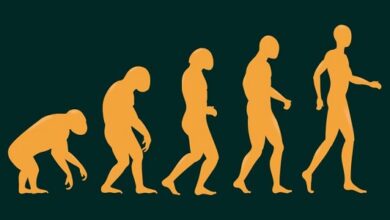Causes of the Cold War with Characteristics
Cold War
Political, ideological, social and cultural confrontation that took place between 1945 and 1989. Characteristics and causes of the Cold War
| Data | |
|---|---|
| Date | 1945 – 1989 |
| Participants | United States vs. Soviet Union |
The Cold War was a political, ideological, social and cultural confrontation that took place between 1945 and 1989 between two blocks of countries led by the United States of America (USA) and the Union of Soviet Socialist Republics (USSR) .
The axis of the conflict developed around the two superpowers that emerged from the Second World War :
- United States: leader of the Western bloc made up of the capitalist European countries. They defended capitalism as an economic system and liberal democracy as a political system.
- Soviet Union: headed the so-called Eastern bloc or Eastern bloc, made up of the areas under occupation by the Red Army and other communist armed forces. They defended communism as an economic system and popular democracy as a political system.
Enhance your reading: Who led the red army/causes/definition/dissolution
Characteristics of the Cold War
The Cold War had the following characteristics:
- It was not an armed conflict, but rather constituted a permanent threat of conflict between the two blocks.
- Each of the blocks was organized through treaties of cooperation and military support. The western bloc integrated NATO (North Atlantic Treaty Organization) and the eastern bloc the Warsaw Pact .
- There was a strong arms build-up . Both the Soviet Union and the United States and the powers allied to both blocs accumulated nuclear weapons with the ability to destroy the entire planet.
- The demonstration of the power and destructive capacity of the states in conflict was manifested in constant nuclear tests. Characteristics and causes of the Cold War
- The balance between the superpowers was held in mutual fear of a nuclear conflict that would cause mutual destruction. A strong sense of fear of nuclear war was unleashed, especially in Western society. The moment of maximum tension was the Cuban Missile Crisis (1960).
- The differences between the powers were manifested in the direct or indirect participation in conflicts between other countries , especially in Asia and Africa, which were not directly aligned with one of the blocs. For example, the Korean War (1950-1953), the Vietnam War (1955-1975), the Yom Kippur War (1973).
- The competition between the blocks was evidenced in other areas such as culture and technology . One of these manifestations was the space race , a competition for space exploration.
- In societies, the conflict was sustained through the enormous propagating apparatus of both blocks. For the powers, the achievements obtained were as important as their communication, since the triumphs and failures of the missions were perceived as triumphs or failures of a political model or of a State over the other.
Causes and consequences of the Cold War
Causes
We can highlight 2 main causes of the Cold War:
- The predominant cause of this war was that both the Soviet Union and the United States wanted to impose their ideologies throughout the world.
- The Marshall Plan , which had as objective that the North Americans presented economic resources at low interest rates so that the capitalist countries would resurface after the Second World War, did not please the communism of Josef Stalin.
Consequences
Some of the consequences of the Cold War were:
- The polarization of the world into two camps , the pro-communist and the anti-communist. This manifested itself in the weakening of the communist parties of the West and the elimination of the non-communist parties in the USSR.
- Accumulation of arms in the satellite countries of the powers that after the end of the Cold War were redirected to guerrilla movements and civil wars.
- Soviet dominance over Eastern European countries and US interference in the internal politics of other countries were consolidated.
- The permanent threat of war favored the emergence of international anti-war and anti-nuclear movements .
Enhance your reading: Fall of Constantinople effects/causes/elaboration
End of the Cold War
After the economic development of the 1950s and 1960s, towards the 1980s both blocs suffered economic crises . Interference in the politics of other countries and the escalation of arms consumed an enormous amount of resources and caused crises in both the US and the USSR. Some satellite countries of the Soviet Union began to express their discontent.
In successive meetings, the leaders of both blocs, Ronald Reagan and Mikhail Gorbachev (Reykjavik, 1986 and Washington, 1987), agreed on the need to initiate a new model of international relations.
The USSR initiated a series of profound internal reforms that led to a greater openness to the West and culminated in the fall of communism. Characteristics and causes of the Cold War
Symbolically, the fall of the Berlin Wall in 1989 is considered one of the events that marked the end of the Cold War.
